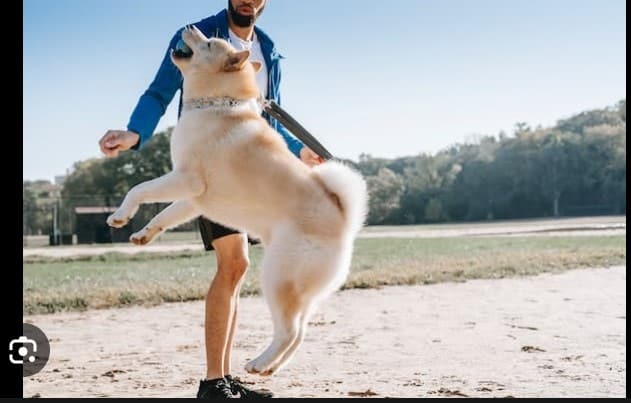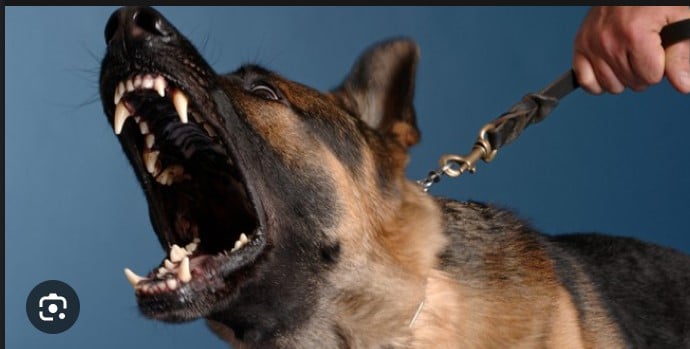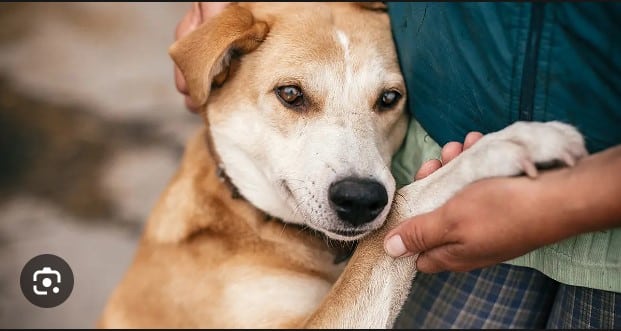The initial weeks with a new puppy are usually filled with excitement. It’s thrilling to have a new furry companion, but it can also be a bit unsettling. Many dog owners struggle with understanding and dealing with common behavioral issues in their pets during this time. If you are confused about your dog’s behavior, you should keep reading this post. We have compiled a list of 10 Typical Dog Behavior Challenges and Solution to help you. Common dog problems like Biting, Jumping on People, Excessive Barking and Separation Anxiety were discussed as well as their solutions.
In an ideal world, our dear dogs would be perfect in every way, always doing what we say and never causing any problems. However, the truth is that most dogs may have some behavior issues. While basic training and socializing can help with some behaviors, it might not be sufficient all the time. It’s important to know that common dog behavior problems don’t always mean there’s something seriously wrong with your dog. It also doesn’t necessarily imply that you’ve done something wrong or failed in any way. We shall now talk about some of the common challenges you might face with your dogs and what to do.
See also: Top 10 Dog Breeds for Families

10 Typical Dog Behavior Challenges and Solution
Most of the things your dog does, whether good or bad, are just natural behaviors in their “pack” mindset. But don’t worry, these behaviors can be easily fixed. They include:
Excessive Barking
Most dogs make sounds in various ways, like barking, howling, or whining. If your dog barks too much, it’s seen as a behavior issue.
To fix excessive barking, figure out why your dog is making noise. The main reasons for barking are:
- A sign of Warning or alert
- Playfulness and excitement
- When Seeking attention
- Feeling anxious
- If your dog is Bored
- Reacting to other dogs
Solution:
Teach your dog to bark less. Use commands like “bark” and “quiet.” Be patient and keep giving the commands consistently. Figure out why your dog is barking a lot, and work on that issue. With dedication and careful attention, you can help your dog stop barking too much.
See also: Playtime Champions: 10 Most Playful Dog Breeds

Biting
Dogs bite for various reasons, mainly because of their pack instincts. Puppies, in particular, use biting to explore and understand their surroundings. However, it’s important to prevent this behavior, especially in puppies, as it can become a more significant issue as they get older.
Solution:
Dog biting is a natural behavior because dogs use their mouths like we use our hands. But with regular training and socialization, you can correct this.
Spend time with your pet, let them meet other animals and people – this is the most effective solution. You can also take your dog to new places and expose them to different things. If your dog seems uneasy, don’t ignore it; try to make them more comfortable.
In summary, with consistent supervision and effort, you can change this habit. Keep reading for more of the 10 Typical Dog Behavior Challenges and Solution.
Chewing
Chewing is something all dogs do naturally. It’s a vital part of their nature. But if your dog starts chewing too much and causing damage, it can become a problem. Dogs usually chew a lot for these reasons:
- Teething in puppies
- Boredom or having too much energy
- Feeling anxious
- Being curious, especially in puppies.
Solution:
Help your dog chew on the right stuff by giving them lots of suitable chew toys. Keep your stuff away from them. When you’re not around, use a crate or limit where they can go to prevent damage.
If you see your dog chewing on the wrong thing, make a sharp noise to distract them. Then, give them a chew toy instead. It’s crucial to ensure your dog gets enough exercise so they can use up energy and stay engaged without resorting to chewing.
See also: Top 10 Best Travel Friendly Dog Water Bottles
Separation Anxiety
Many people talk about separation anxiety as a common issue in dogs. This includes things like barking, chewing, going to the bathroom in the wrong place, and damaging things when a dog is away from their owner. But not all of these behaviors are because of separation anxiety. True signs of separation anxiety include:
- The dog gets worried when the owner is getting ready to leave.
- Bad behavior happens within the first 15 to 45 minutes after the owner leaves.
- The dog always wants to be near the owner.
- The dog tries to touch or stay close to the owner all the time.
Solution:
If your dog truly has separation anxiety, it needs special training, changing its behavior, and getting used to being alone. In severe cases, the vet might suggest medication.

Jumping on People
When dogs meet each other, they say hello by sniffing behinds and faces. Dogs would like to do the same with humans, but our faces are up high. So, when dogs jump on people, it’s like their way of trying to be polite in dog terms.
However, sometimes it could show they’re trying to be in charge. Regardless, this behavior isn’t usually liked by strangers and should be fixed before it becomes a problem.
Solution:
To fix this usual dog behavior, when you come home, don’t pay attention to your dog until she stops jumping. Don’t yell, call her, or push her away. Doing any of these might make her more excited and jump more because it seems like a game to them.
Only start petting and praising your dog when her feet are on the ground. This way, she learns that you ignored her because she jumped up.
See also: The Essential Guide To Dog Ear Cleaner
Peeing and Pooing in Inappropriate Places
When dogs pee or poop in the wrong places, it can be really annoying. It can ruin parts of your home and make your dog not welcome in certain places. The first thing you should do is talk to your vet to make sure there’s no health issue. If your dog is healthy, the problem might be due to:
- Peeing when excited or submissive
- Marking territory
- Feeling anxious
- Not being properly house-trained
Solution:
Puppies often can’t help peeing in the wrong places, especially before 12 weeks old. But for older dogs, it’s different. If they get into the habit of going in the wrong spots, it might take a lot of effort to change. However, with proper training, most adult dogs can learn to use “doggy doorbells” to let their owners know when they need to go outside.
Aggression
Dogs can show aggression without actually attacking. This typical behavior might include things like showing teeth, growling, or barking. Even if your dog doesn’t bite, aggressive actions, especially towards the owner or family, are not okay. This is one of the most rampant problems in our list of the 10 Typical Dog Behavior Challenges and Solution.
Solution:
If you have an aggressive dog, it’s best to get help from an experienced trainer. If that’s not an option, be very cautious.
Show your dog that they’re not in charge and establish clear boundaries. Ignore bad and aggressive behavior, and use positive reinforcement.
Keep an eye on your dog’s progress. If obedience training and setting limits don’t work, talk to your vet and a professional trainer. Sometimes, you might need an expert to help your dog learn to live well with people.
See also: How to Create a Dog-friendly Home

Begging for Food
Begging is not a good habit, but some dog owners unintentionally make it worse. This can cause tummy issues and make dogs overweight. Dogs beg because they really like food. However, sharing human food as a treat isn’t the right way to show love. Although it’s tough to resist their cute looks, giving in “just this once” causes a problem later on. When you let your dog beg, you’re telling them the wrong message.
Solution:
To stop your dog from begging, make sure they know that begging won’t get them any food.
It’s that straightforward.
When your dog begs, ignore them, and don’t give them any food while you’re eating. Be patient and stick to it.
Don’t scold your dog for begging because giving attention might make it worse. Keep in mind, it’s a continuous effort. Even if you give in after a while, you’ll have to start the process all over again.
Climbing and Jumping on Furniture
Many dog owners don’t want their pets spending too much time on furniture, especially if they are left alone outside or may damage sofas due to separation anxiety.
It’s reasonable and possible to keep dogs off furniture unless you have a special dog-friendly couch.
For dogs with dominance issues, not allowing them on furniture can also be a way to train them to stop being dominant and establish their place in the hierarchy.
Solution:
- If you want to teach your dog not to hop on furniture, give them their own pet bed first.
- During training, praise or treat your dog when they use their bed instead of yours.
- If you see your dog on the couch, make them get off right away with a firm command.
- If needed, block off access to the furniture when you’re not around or use safe furniture repellents for dogs.
See also: Best Dog Bowls for Healthy Eating Habit
Digging
If they get the chance, many dogs will dig because it’s in their nature. Some breeds, like terriers, are more likely to dig due to their hunting background. Generally, dogs dig for these reasons:
- Boredom or having too much energy
- Feeling anxious or scared
- Following their hunting instinct
- Seeking comfort, like making a nest or cooling down
- Wanting to hide things, like bones or toys
- Trying to escape or reach a certain place
Solution:
It can be annoying when your dog digs up your yard. Find out why they’re doing it and try to stop that reason. Give your dog more playtime, spend quality time together, and do more training. If digging continues, create a specific area, like a sandbox, where your dog is allowed to dig. Teach them it’s okay to dig only in that spot.

Conclusion
Regardless of the breed, various dog behavior issues are common. Some are typical dog behaviors, while others are learned through positive or negative feedback. Similar to babies, dogs see attention as attention, whether it’s positive or negative. It’s crucial to stay calm when dogs misbehave, even if it’s frustrating. Let us know in the comments if you found this post on 10 Typical Dog Behavior Challenges and Solution helpful.
See also: https://vcahospitals.com/know-your-pet/dog-behaviorwhats-normal-and-whats-not
